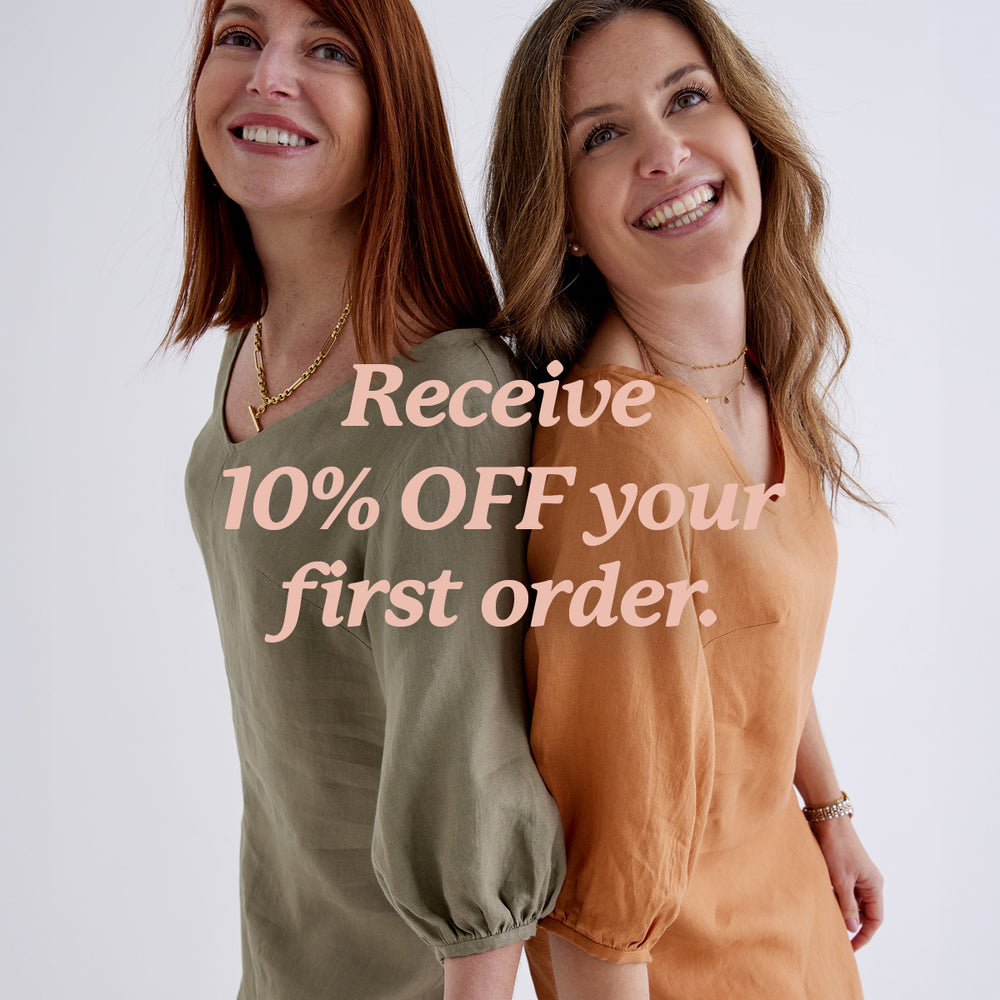Frequently Asked Questions

1. Where Are Our Clothes Made
All our sample garments and patterns are produced in our studio in Waterloo, Sydney Australia. The bulk of our range is then cut by a locally fabric cutter and manufactured by a group of seamstresses in their Sydney workshop.
2. About Our Linen
The linen we use is spun from a high-quality European Flax, which is then woven and dyed in a small mill in China using OEKO-TEX approved dyes. This linen comes pre-washed which reduces the chance of shrinkage.
3. What Does OEKO-TEX Approval Actually Mean
This certification is strictly monitored and given to those companies that are using safe, non-toxic dyes to dye their fabrics. Dyes in the fashion industry not only end up in our waterways and ecosystems, but they can also be harmful to the wearer causing all sorts of irritations, as well as the maker who is handling the fabric all day long. This is why it’s important that we support clothing brands using OEKO-TEX approved fabrics.
4. How Does Devina Louise Maximise Their Efforts to Be Sustainable
- We create our designs to minimise wastage. All our patterns are computerised, and the fabric bulk is cut by a machine which means it is very accurate and efficient at maximising the space. Any leftover fabric pieces are used to make bias bindings and accessories.
- Keeping our products made in Australia, not only means that we can support our economy, but it also means there we can minimise our carbon footprint from transport pollution. It means we are paying an ethical wage to our manufacturers and have a good relationship with them.
- We focus all our designs to be made from natural fibres that feel great to wear and are quick to decompose at the end of their lifespan.
- We mostly focus on linen because not only is it a natural fibre it is also very sustainable to grow and harvest.
- We give back to the not-for-profit charity- One Tree Planted. This means for every sale we make; a tree is planted. This is a global organisation, and the trees are planted where they are needed most. They have recently celebrated planting 100 million trees worldwide!
5. How is Linen made
Linen is a sustainable fabric made from flax fibres. To extract the fibres, the plants are either cut or pulled by hand from the ground (it's said that pulling creates finer linen). The seeds are then removed through a process called winnowing or ripping, followed by retting which removes the plant stock from the fibres. Once the fibres are separated they collect the longest pieces, which can be up to 20 centimetres long, they are then spun into yarn and eventually woven into fabric.
The flax plant requires very little water to grow and 5 times less fertilisers and pesticides compared to conventionally grown cotton.
6. Benefits of Linen
The resulting linen textile is two to three times stronger than cotton and dries at a much faster rate. Because of its porous nature, linen has natural heat and moisture-wicking properties that make it a good conductor of warmth and a popular fabric to use for clothing or bedding in the summer. The natural fibres also hold dye colours better than some other materials, and thus the fabric is available in almost any imaginable colour. Linen is also naturally anti-bacterial, which made it a popular choice for bandages for centuries and a favourite for people with sensitive skin.
Thanks to the strength of flax fibres threaded inside linen fabric, the main element responsible for giving linen fabric this ability to endure the test of time. Any cotton clothing could last for a season or approximately 5 years maximum, but linen clothing goes beyond one season and one decade.
The creases that form in linen add to its natural beauty and charm and therefore it is an easy to care for fabric.






Leave a comment